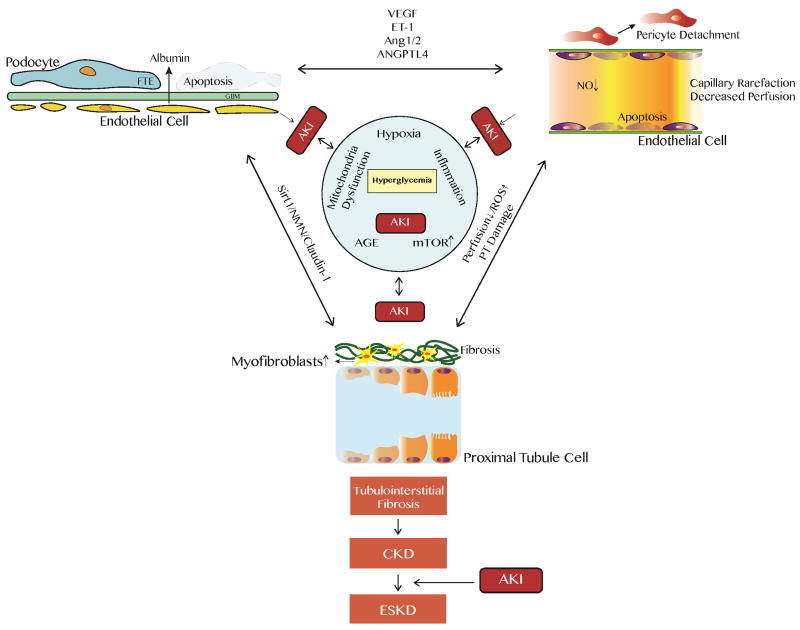Figure. Scheme of relationship between diabetic nephropathy (DN) and acute kidney injury (AKI).
Diabetic nephropathy ensues from chronic hyperglycemia via several mechanisms, such as worsening hypoxic status, chronic inflammation, mitochondrial dysfunction, increasing mTOR signaling, and exposure to advanced glycation endproduct (AGE). Diseased kidney cells are more susceptible to acute kidney injury (AKI), and vice versa these damaged cells from DN can hasten the damage during each AKI episode. As traditional paradigm of DN has been expanded from glomerulus (podocyte)-centered to other cell types, the crosstalk among different kidney cells are revealed to be crucial in DN development. After diabetic kidneys undergo repetitive AKI, maladaptive repair occurs from acute renal insults, and irreversible tubulointerstitial fibrosis accumulates and eventually lead to chronic kidney disease (CKD) and end-stage kidney disease (ESKD).

